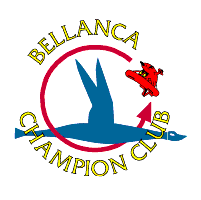Jonathan Baron
New member
Although I don't feel much like posting at the moment, I thought it best to share what should have become obvious from the lengthy power pack thread: Electrol 750B power packs are no longer viable for overhaul for 14-19s, or for Cruiseairs employing O435 engines and the 750B packs.
1. Nobody is willing to overhaul them any longer.
2. Those who have the data on them will not share it due to liability concerns.
3. Changes in FAA repair regs - especially the provision that everyone who touches a part during an overhaul has to be an employee of an FAA certified shop - are serving to eliminate the practice of farming work out. As no shop can really stay in business by doing everthing themselves, the first to go are rare bits of machinery that required specialized knowledge and parts fabrication. This is simply a sound business decision. Most of us know all too well how close to extinction many shops are even if they're busy all the time.
4. The Electrol 750N will remain supported for the foreseeable future. The parts used in it are the same as those employed in power packs for Apaches and Aztecs.
5. Electrol 750Ns were originally created for Navions and there are *many* Navions still flying. The type has a good parts supply due to the fact that the military ordered a few along with a massive inventory of spare parts. Thus 750N cores will not become rare anytime soon.
6. By all accounts from people I spoke to in the overhaul biz, the 750N is a better designed and more reliable pack. I know many of you have had awful problems with them but all packs need to be overhauled occasionally, and not all shops do a great job. In short, every mechanical device ever created is subject to failure and I believe it's beyond dispute that a properly installed 750N in good condition would do no worse than a 750B in a similar condition.
Therefore: conversion to the 750N is the best answer.
In the course of having my 14-19 changed over, I'm getting drawings (I hope!) from Bellanca, along with a plumbing diagram. I plan to make the resulting 337, or whatever the FAA is calling 337s nowadays, available to the club. I hope this may save you all from having to do the missionary work from scratch each and every time an owner wants to perform this.
Here's to a future of landing gear going up and down when they should!
Jonathan
1. Nobody is willing to overhaul them any longer.
2. Those who have the data on them will not share it due to liability concerns.
3. Changes in FAA repair regs - especially the provision that everyone who touches a part during an overhaul has to be an employee of an FAA certified shop - are serving to eliminate the practice of farming work out. As no shop can really stay in business by doing everthing themselves, the first to go are rare bits of machinery that required specialized knowledge and parts fabrication. This is simply a sound business decision. Most of us know all too well how close to extinction many shops are even if they're busy all the time.
4. The Electrol 750N will remain supported for the foreseeable future. The parts used in it are the same as those employed in power packs for Apaches and Aztecs.
5. Electrol 750Ns were originally created for Navions and there are *many* Navions still flying. The type has a good parts supply due to the fact that the military ordered a few along with a massive inventory of spare parts. Thus 750N cores will not become rare anytime soon.
6. By all accounts from people I spoke to in the overhaul biz, the 750N is a better designed and more reliable pack. I know many of you have had awful problems with them but all packs need to be overhauled occasionally, and not all shops do a great job. In short, every mechanical device ever created is subject to failure and I believe it's beyond dispute that a properly installed 750N in good condition would do no worse than a 750B in a similar condition.
Therefore: conversion to the 750N is the best answer.
In the course of having my 14-19 changed over, I'm getting drawings (I hope!) from Bellanca, along with a plumbing diagram. I plan to make the resulting 337, or whatever the FAA is calling 337s nowadays, available to the club. I hope this may save you all from having to do the missionary work from scratch each and every time an owner wants to perform this.
Here's to a future of landing gear going up and down when they should!
Jonathan
